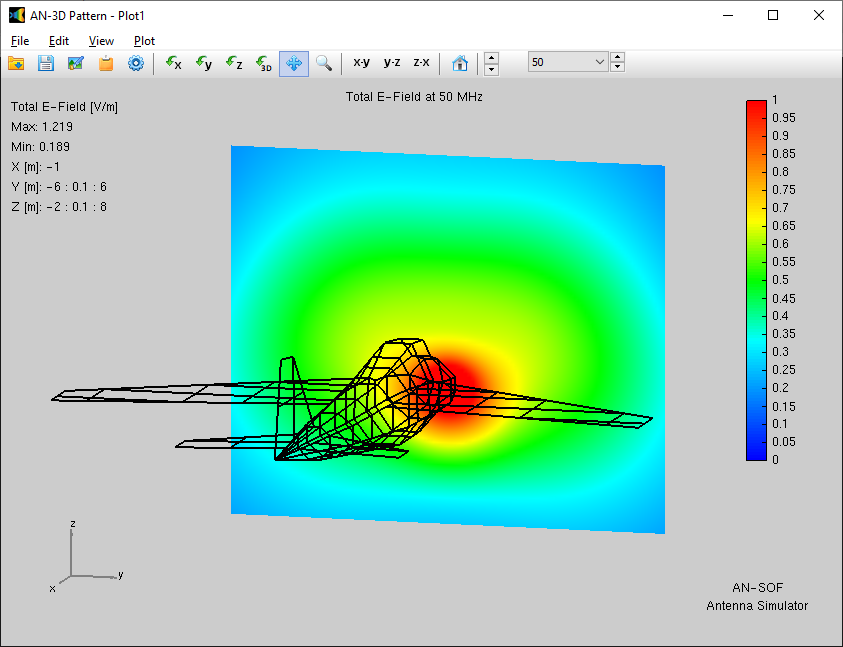Search for answers or browse our Knowledge Base.
Guides | Models | Validation | Blog
Plotting Near Field Patterns
The grid of points where the near field is calculated can be specified in the Near-Field panel of the Setup tab. There, the points can be entered in Cartesian, Cylindrical, or Spherical Coordinates. The near electric (E) and magnetic (H) fields can be calculated separately. Of course, the near fields can be calculated in any region of an antenna, very close to it or far away. In the far-field region, the near fields will tend to the known behavior of far-fields: E and H are perpendicular to each other and perpendicular to the radial direction from the antenna, they oscillate in phase, and their magnitudes have a constant ratio: E/H ≈ 377 Ohms (often also approximated as 120π Ohms) in free space. This behavior can be verified by performing calculations of the “near” E and H fields far from an antenna.
When both E and H fields have been calculated, the power density (S) will also be available in tables and plots. The total rms power density is calculated as S = |E x H*|. This metric is particularly important for assessments to evaluate electromagnetic field compliance with radiation exposure limits published by regulatory authorities.
To plot the near electric field as a 3D graph with a color scale, go to Results > Plot Near E-Field Pattern > 3D Plot in the main menu. This command executes the AN-3D Pattern application (Fig. 1). To display a 3D plot of the near magnetic field or power density, respectively, go to Results > Plot Near H-Field Pattern > 3D Plot or Results > Plot Power Density Pattern > 3D Plot.

Near-field 3D plots will be shown according to the type of coordinate system chosen in the Near-Field panel of the Setup tab: Cartesian, Cylindrical, or Spherical. If near-fields were calculated for more than one frequency, a dialog box asking for a fixed frequency will be shown before plotting the near-field pattern.
The near electric field can also be plotted as a 2D rectangular plot by going to Results > Plot Near E-Field Pattern > 2D Plot in the main menu. The near magnetic field can be plotted by going to Results > Plot Near H-Field Pattern > 2D Plot, and the power density by going to Results > Plot Power Density Pattern > 2D Plot. These commands execute the AN-XY Chart application, where the total rms electric field, magnetic field, or power density is plotted in a 2D chart (Fig. 2). The components of the near E and H fields can be plotted individually by going to the Plot menu in the AN-XY Chart and selecting the desired component.

The near-field patterns for a given frequency can also be tabulated by going to Results > List Near E-Field Pattern, Results > List Near H-Field Pattern, or Results > List Power Density Pattern in the AN-SOF main menu.
Regarding the E and H Field Components
- If Cartesian coordinates have been set in the Near-Field panel of the Setup tab, the Ex, Ey, and Ez electric field components and the Hx, Hy, and Hz magnetic field components will be calculated in a rectangular grid of points in space with coordinates (x, y, z).
- If Cylindrical coordinates have been set in the Near-Field panel of the Setup tab, the Er, Ephi, and Ez electric field components and the Hr, Hphi, and Hz magnetic field components will be calculated in a cylindrical grid of points in space with coordinates (r, phi, z).
- If Spherical coordinates have been set in the Near-Field panel of the Setup tab, the Er, Etheta, and Ephi electric field components and the Hr, Htheta, and Hphi magnetic field components will be calculated in a spherical grid of points in space with coordinates (r, theta, phi).
